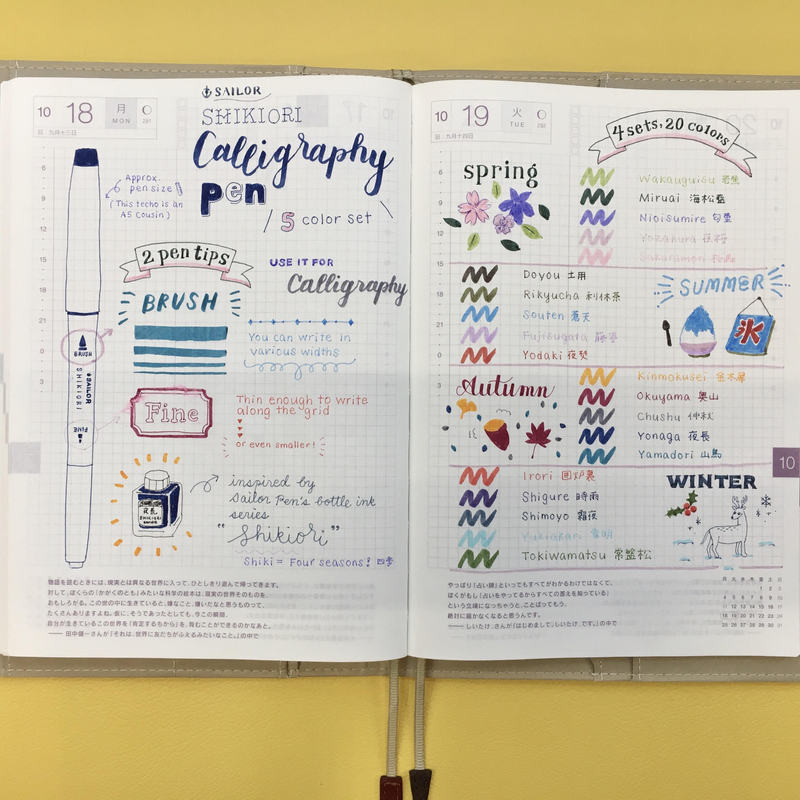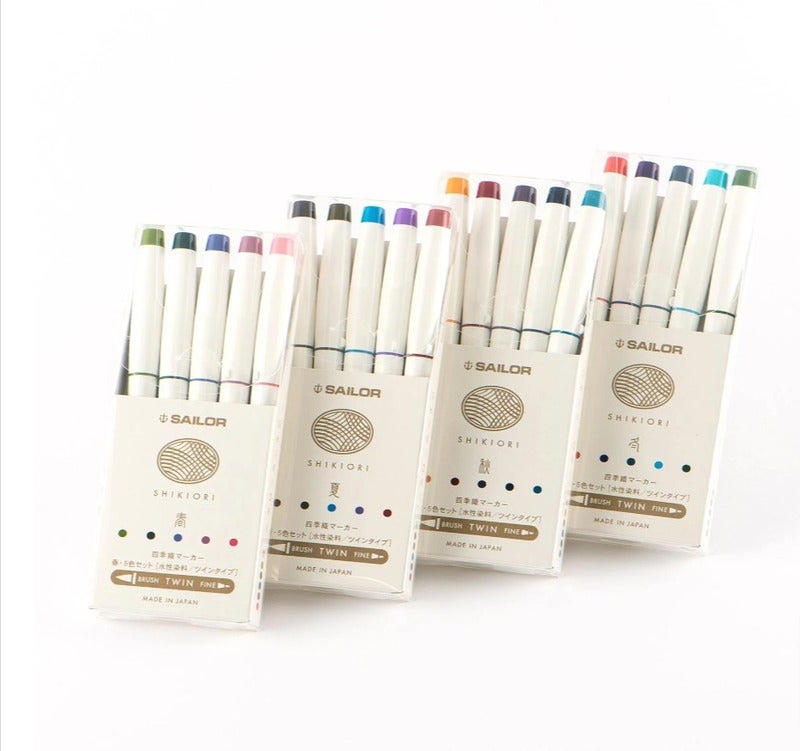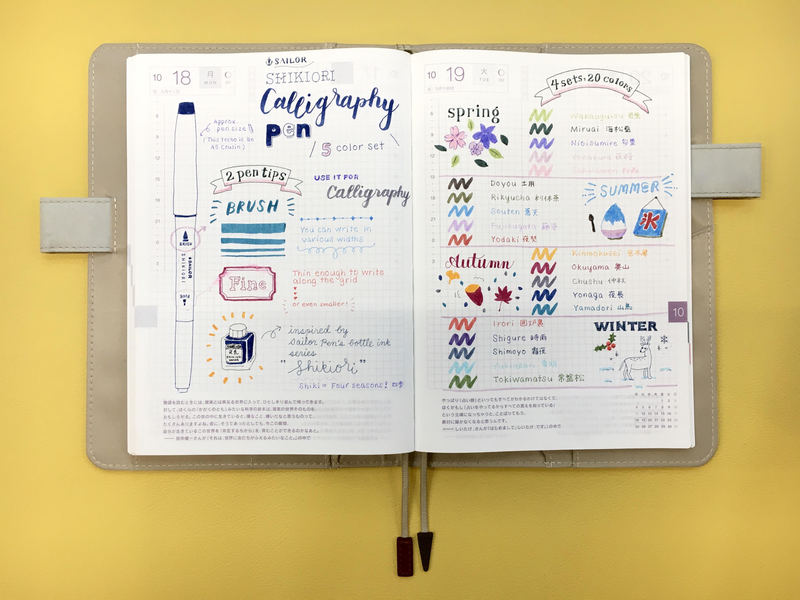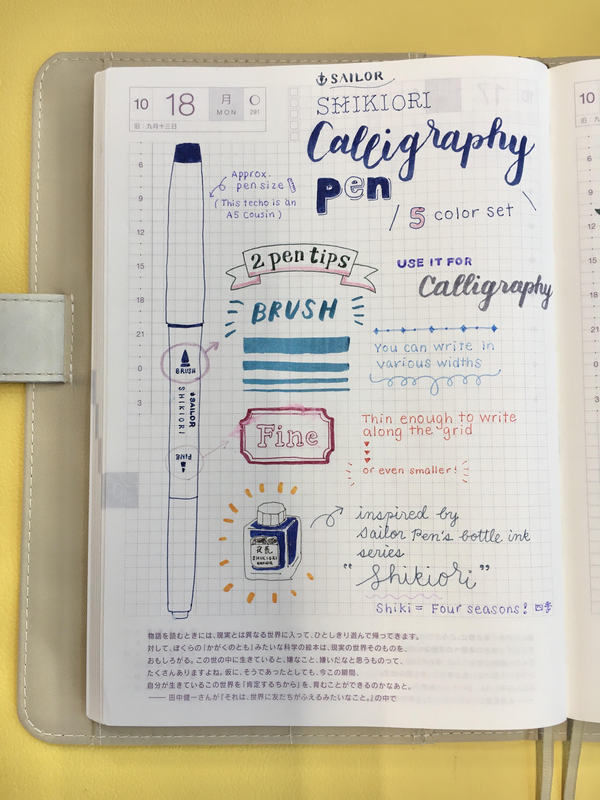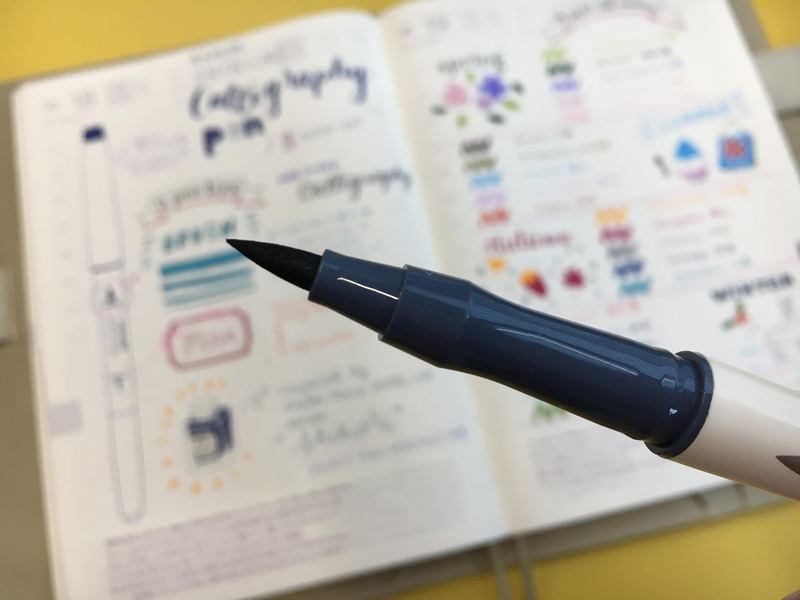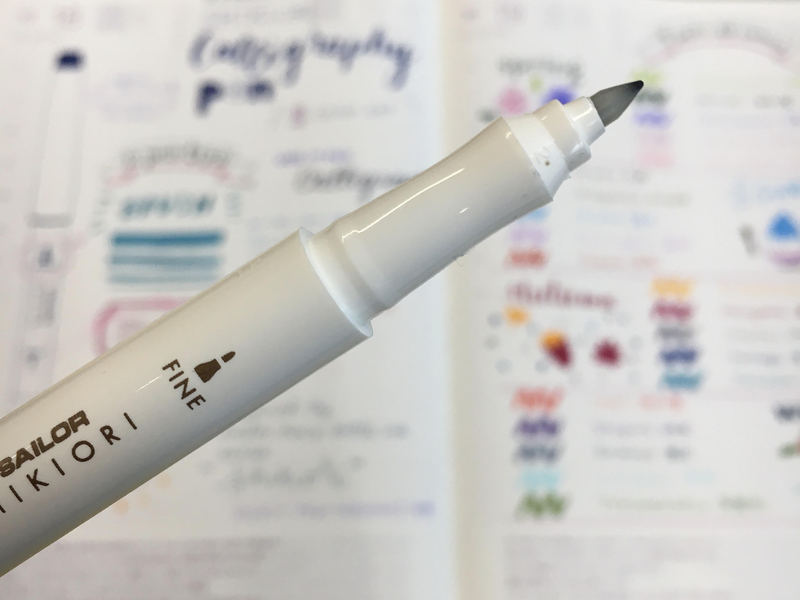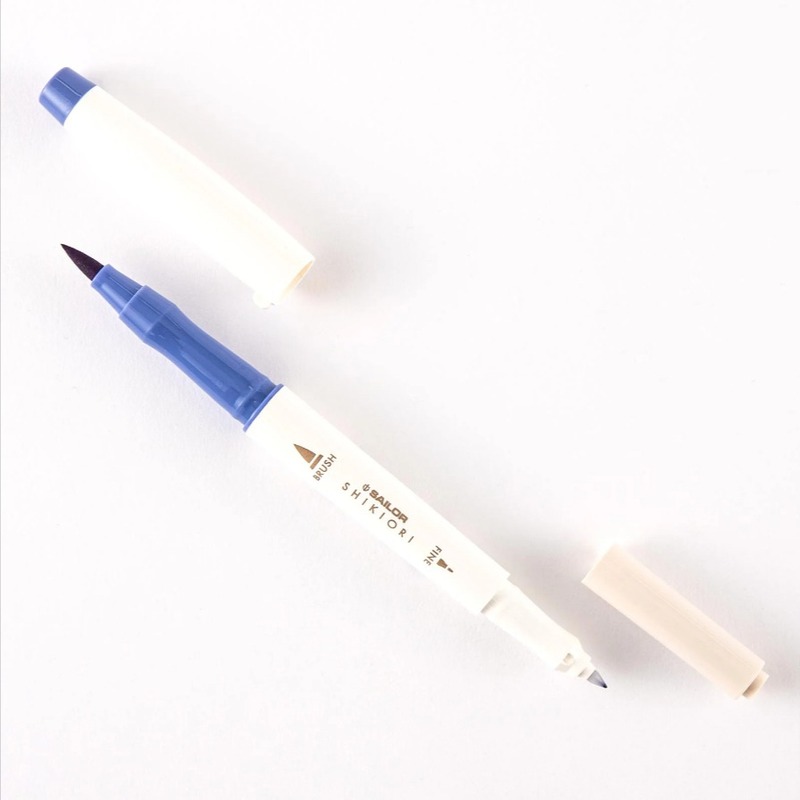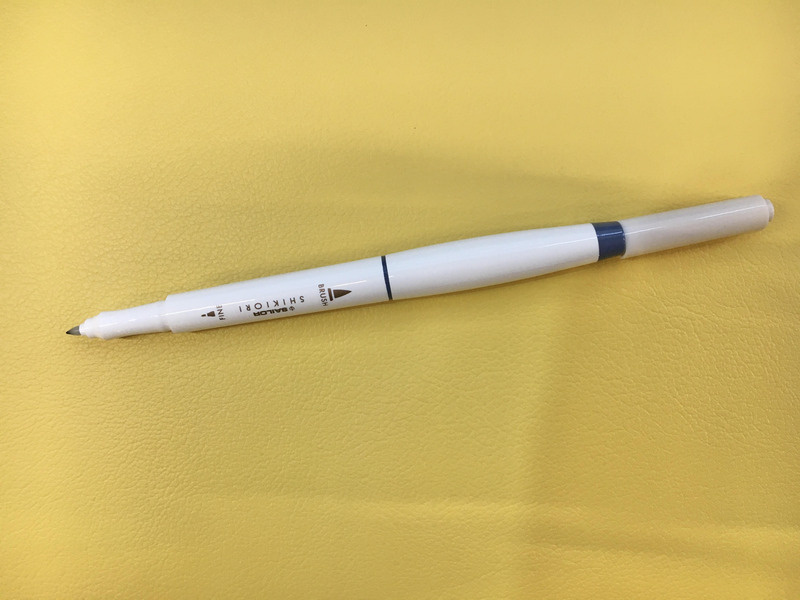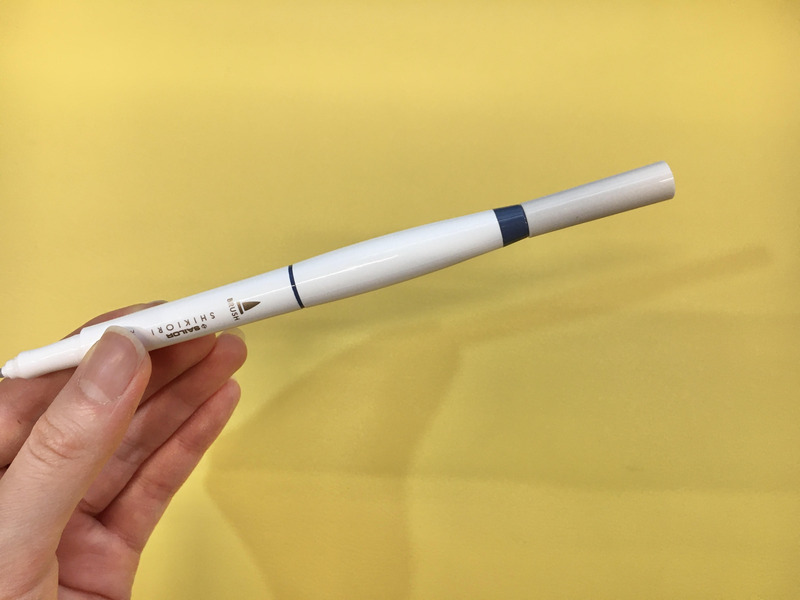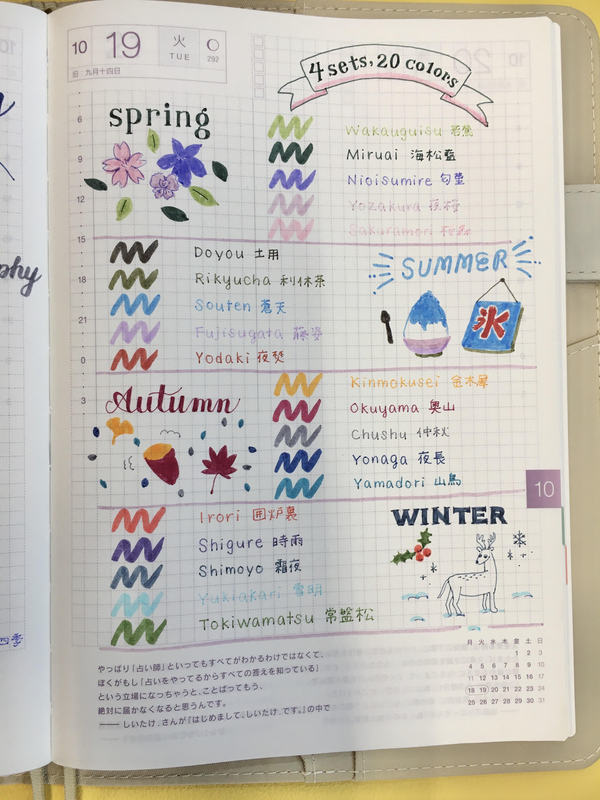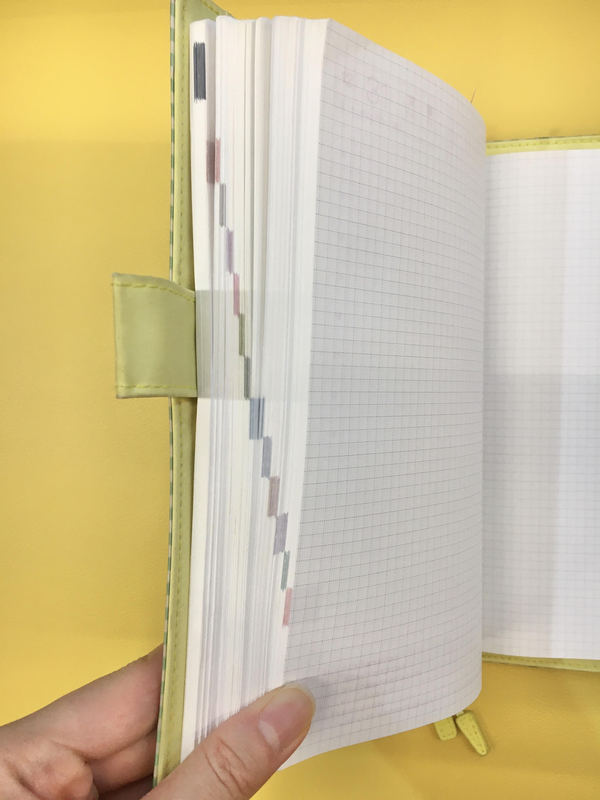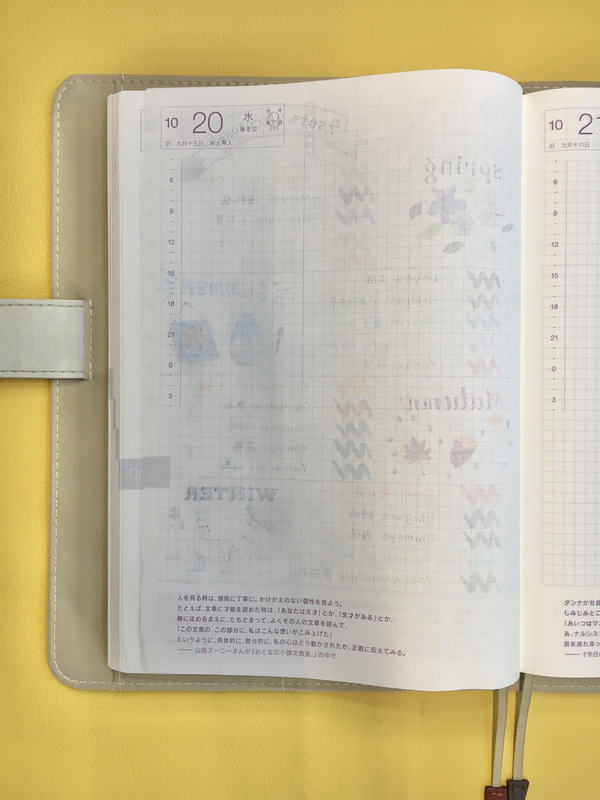Hobonichi Techo NEWS
Techo team members will be talking about sales information,
their recommended stationery, usage examples, and more.
Favorite Stationery:
Shikiori Calligraphy Pen
Hi everyone! Today, I'll be talking about my favorite pen, the Shikiori Calligraphy Pen!
These dual-tip, water-based markers come in 20 beautifully nuanced colors. I found out about them a year ago and have been using them ever since! They werenft available for international shipping through the Hobonichi Store last year, but they are now this year, so I thought now would be the perfect time to properly introduce them to you.
Ifve been using them mainly with my techo, so I decided to write a spread to show you how they look on the Hobonichi Techofs Tomoe River paper.
There are so many things I love about this pen, but to name a few . . .
(1) The pen tips are easy to use
As I mentioned earlier, these pens have two types of pen tips: the brush and the fine pen tip.
Brush
Fine
The brush pen isnft too gsofth (or is it better to word it squishy?) so itfs useful both when you want to do calligraphy or when you want to color in illustrations. Lay the pen flat or apply pressure to draw thick lines, and hold the pen upright and release the pressure when you want to draw thinner lines. The fine tip on the other hand is really firm and I feel it doesnft get squished as you use it. (There are some pens where the pen tip gets squashed when you write with high pressure, so this is a big plus for me!) That means you can keep on writing thin lines throughout! This is perfect for writing along the grid of the techo paper.
(2) It looks stylish
Another thing I like about this pen is that it looks stylish. That doesnft mean it lacks in practicality - because the top of the cap matches the color of the ink, itfs easy to identify which pen is which color.
*I was about to write how if I were to mention one flaw, it would be that the cap of the fine tip doesnft click on the other side, so youfd have to leave the cap lying around when using the fine side. (Itfs nothing major, but is something that starts to bother you after a while.) However, I just realized that if you turn the cap upside down, it fits the cap of the other side!! Ifm probably not explaining this in words very well so here are some pictures.
I used to think the cap doesnft click on to the other side . . .
But it does! (when turned upside down)
These pens were inspired by Sailorfs bottle inks, which have packaging thatfs so nice to look at, so no wonder the pens look equally as nice!
(3) The colors are nuanced and beautiful
Last but not least - in fact, this is the part that attracted me to this pen the most - the colors are exquisite. They are inspired by the seasons of Japan, and they have these colors that arenft straightforward. Actually, the reason why we found out about these pens was that a Hobonichi Techo user introduced them to us saying how it goes well the color of the months of the Original and Cousin techo books.
At the Hobonichi Store, you can get them in 5 color sets that are categorized by the season: Spring, Summer, Autumn, and Winter. Which one is your pick?
Personally, I use the gShimoyoh from the Winter set the most because itfs this perfect black-blue color with a tinge of gray, so it doesnft appear too gstrongh on paper (when I pack my page with words, I often find black ink looking too bold). The Autumn set has a great variation of not-too-pale colors if you want to mainly use the fine tip to write in your techo. Having said that, the Spring set has such pretty colors and the gSoutenh in the Summer set is refreshing too. (Another color I use often is the gDoyouh when I feel like writing in brown.)
I think Ifll leave it there as Ifve rambled on for a while now, but do check these pens out if youfre looking for a set of pens with pretty colors and useful pen tips!
The ink doesn't bleed through the other side, which is another good thing
Sailor: Shikiori Calligraphy Pen 5 Colors Set
- 4 sets (Spring, Summer, Autumn, Winter)
- 1,100 yen each (tax included)
>See here for details
